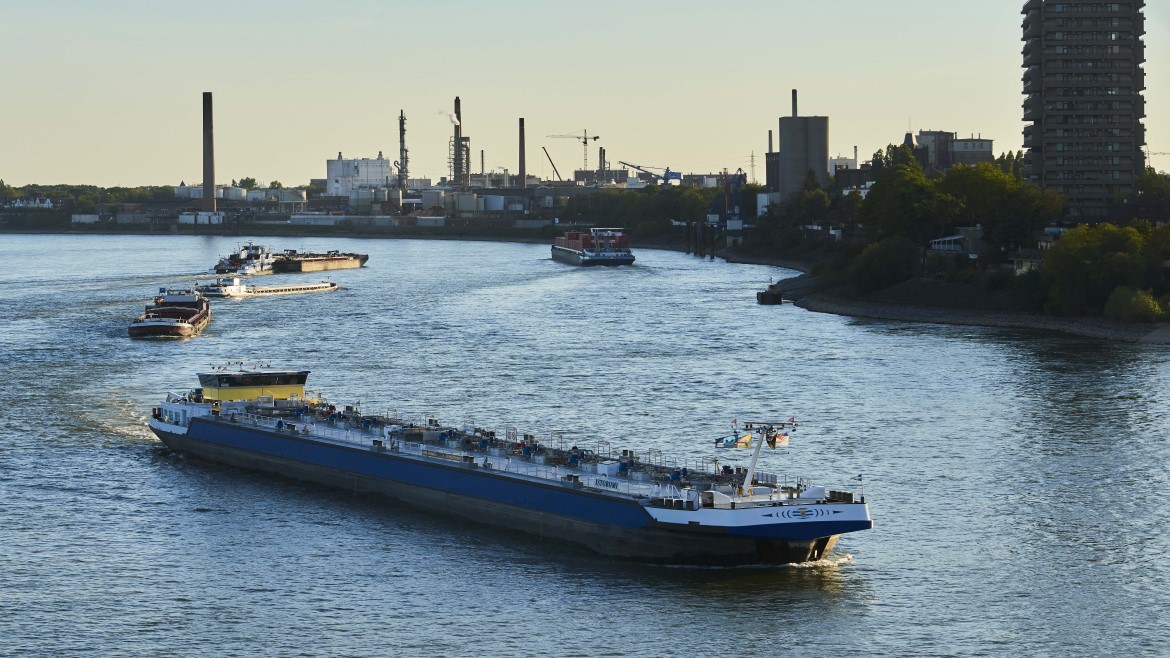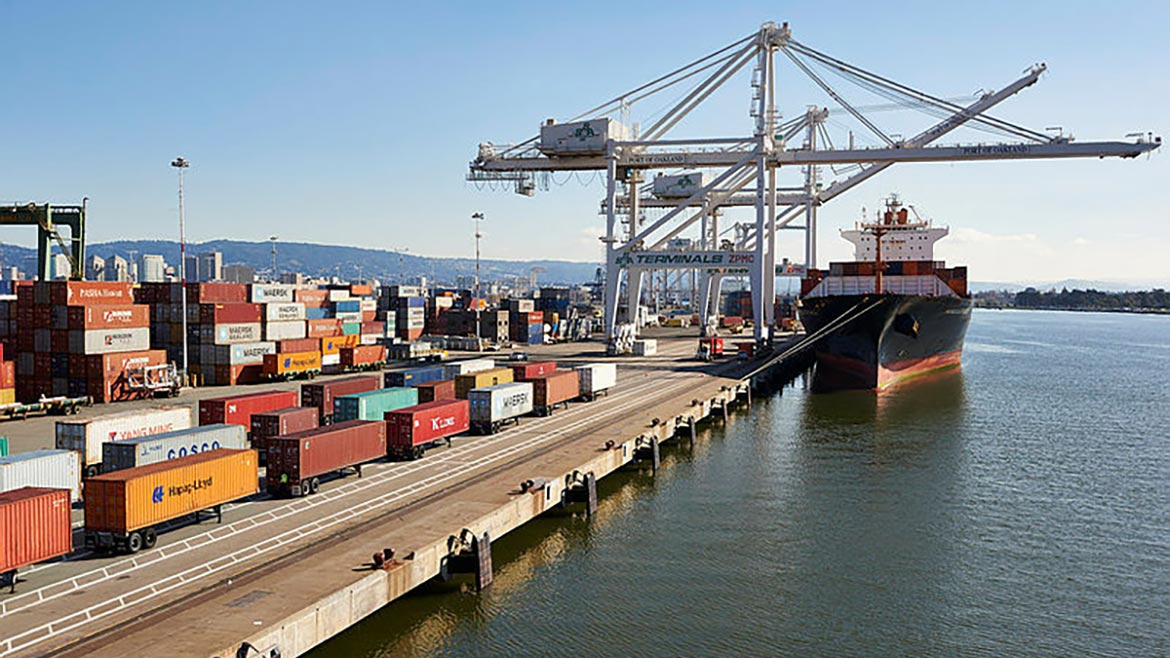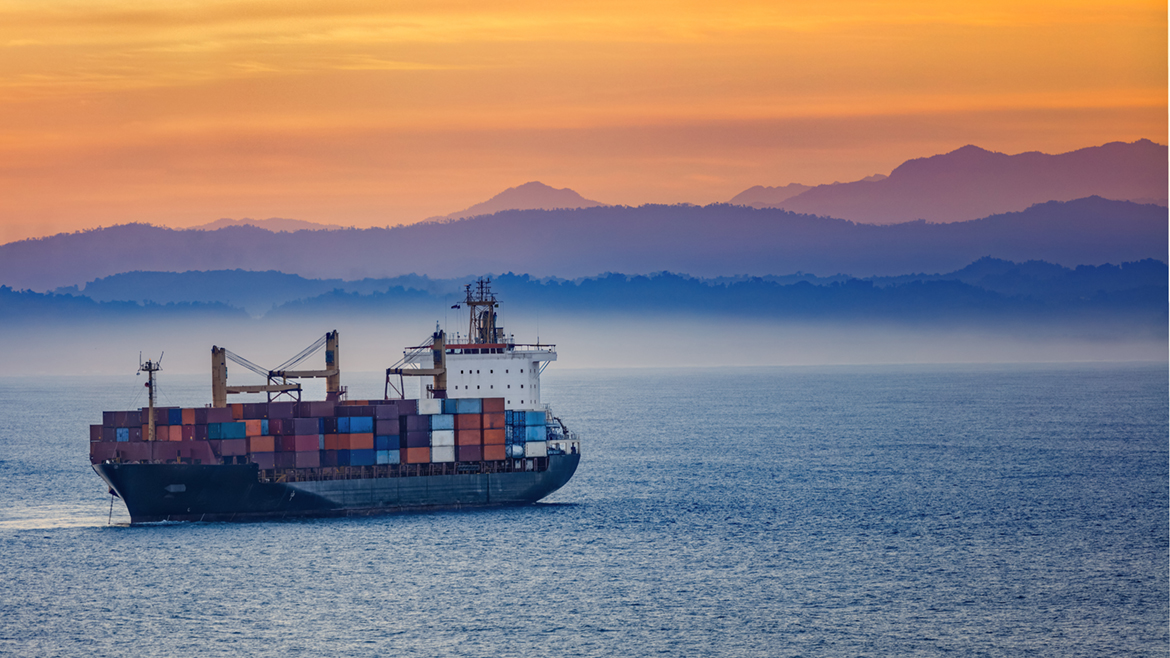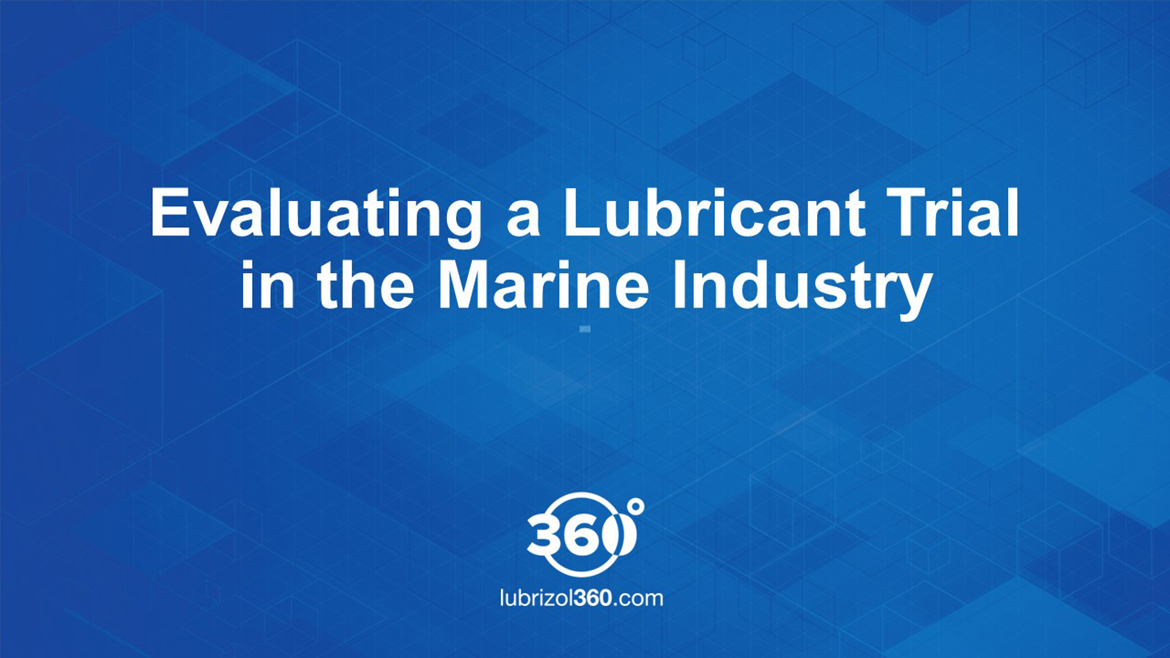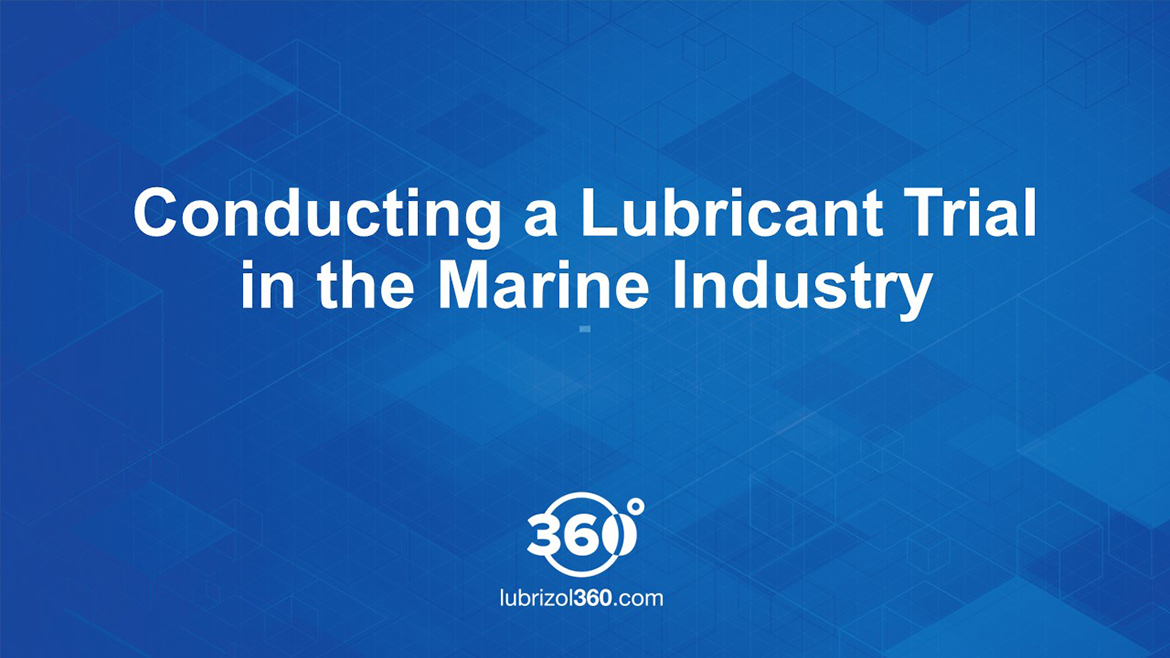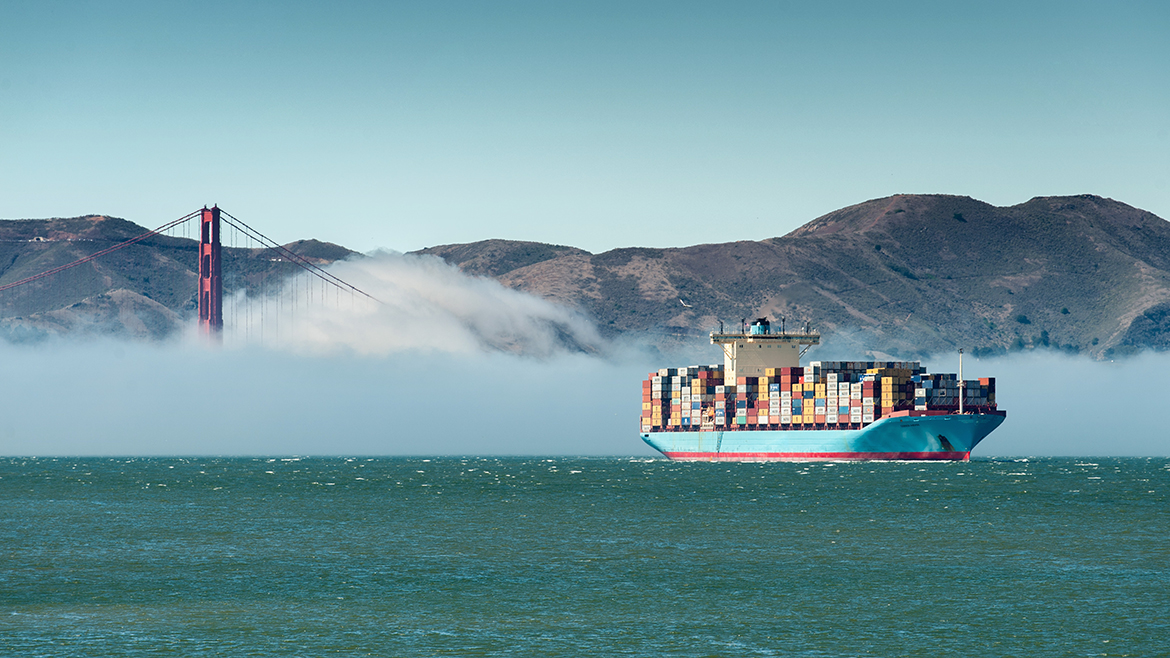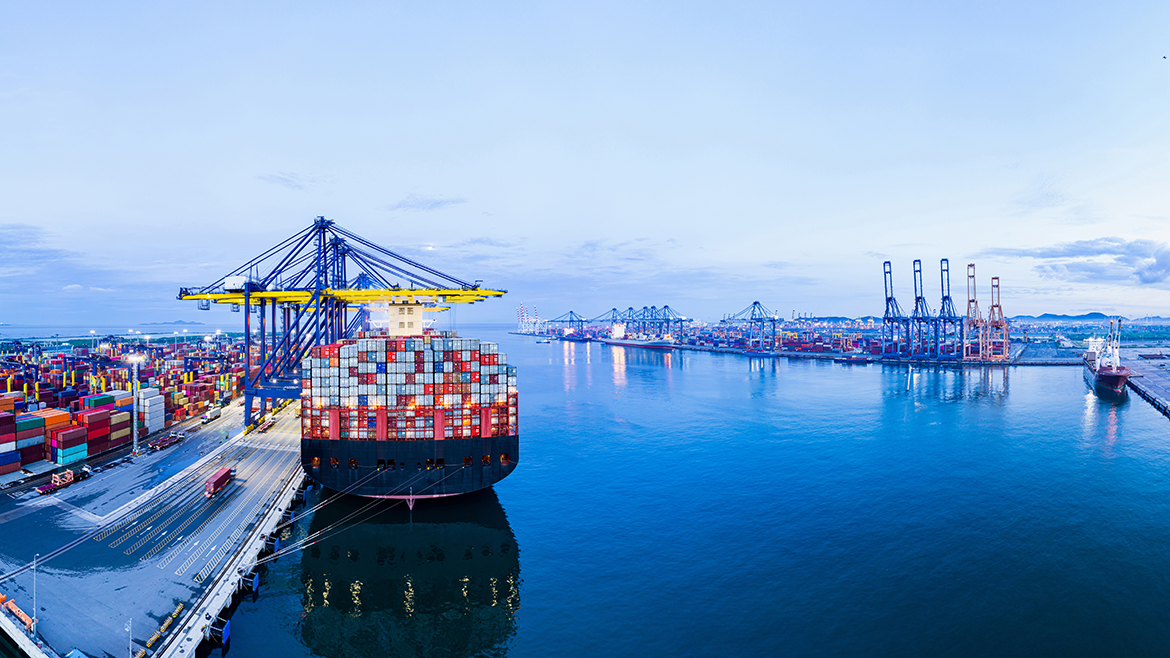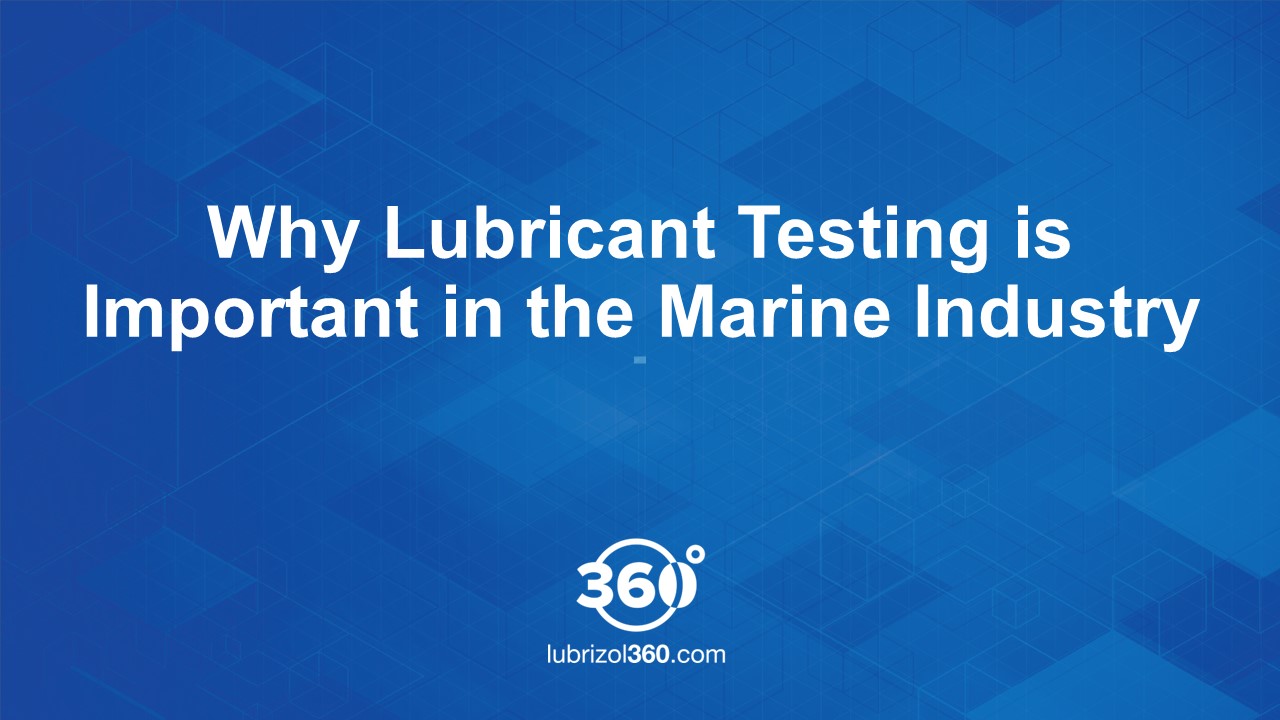Feb 3, 2023
Posted by Ian Bown, Technical Manager, Marine Engine Oils, Lawrie Peck, Technical Manager, Marine Engine Oils
In our first video in our series on lubricant testing in the marine industry, we discussed why in-the-field testing of an oil additive's performance takes place, even though we have tested and developed it using bench tests.
In this second video, we discuss how we prepare for the in-the-field trial.
For more information, please contact your Lubrizol representative.
Video Transcript
Lawrie Peck
So what is the purpose of an approval trial?
Ian Bown
So the purpose is to validate the performance of the oil against the OEM's procedures. But the validation process, ultimately results in a No Objection Letter, and an NOL is your approval then to be able to sell your additive package, or your lubricant into the market.
Lawrie Peck
So do the ship trials always stay the same, or do they change regularly in terms of what's required?
Ian Bown
I would say they don't change regularly, but they do change, and we have seen some changes in recent years MAN Energy Solutions, introduced their MAN CAT 1, and Category 2 requirement, that was a major change for us as an additive company and lubricant companies in the way we validate our oil. Alongside that we've also seen WinGD introduce their DF validation, so I think what we can say is we can move forwards that OEM validation procedures are going to change and evolve, It could be around engine designs or components within those engines, but I think we'll see them continue to evolve.
Lawrie Peck
In terms of the ship trials that we run then, how do we prepare for those and what do we do today?
Ian Bown
We use what we've termed the wheelhouse approach, which really goes through pretrial activity, start of test, mid test, end of test and reporting and that really covers the whole process of running a ship trial.
Lawrie Peck
Okay, so let's go through what the pretrial activity looks like then what does that consist of?
Ian Bown
One of the first things we've got to do is identify a partner that's prepared to work with us on bringing these new products to market, and once you've identified a suitable partner, we can then move on to the next step, which is identifying a suitable vessel. There are steps within steps as we look at the vessels, the engine types, where those vessels are operating and, in our mind, all the time, we're thinking okay where does this vessel visit? Are we going to get access to it? How do we get oil on board? How do we get people on board to conduct inspections? Whilst we're going through all of those activities we also asked the ship owner to provide us with information about the chosen ships and we'll be looking at maintenance data, we'll be looking at scrape down analysis, we'll be looking at scavenge port inspections, at the types of fuel that they're using on board, so we can build a picture of those ships and their operations, and how we would work within the patterns of operation of those vessels. Before we can choose any of those ships, we have to have the engines approved by the OEM. So the collection of data serves 2 purposes, one it gives us a level of confidence in the engines that we're looking at, and two, it provides us the information that we can then take forward to the OEM and say to them we'd like to use this vessel for a validation trial. Is it suitable? They will then provide their approval to use that engine and we can then move on to the next step.
Lawrie Peck
Okay, so is there any pre work or modifications that we have to carry out to the vessel or to the engines before we start to trial?
Ian Bown
Yeah, dependent on the test type, under the MAN category 1 and Category 2 procedures they’ve got what they call a service test, and within the service test the vessel engine has to be fitted with a split lubrication system, where for example if you've got a 6-cylinder engine, we can feed a known commercial oil to three cylinders for example and the candidate oil to the other three cylinders to that engine, so we install a split lubrication system. It's not required for all Lubricant validation trials, but certainly for some of them. We do that installation in coordination with the ship operator and with the OEM. We then commission the system to make sure that there's no leaks, that the electronics talk to the right parts of the system, and we can leave the ship in the knowledge that the system is complete and fully operational.

